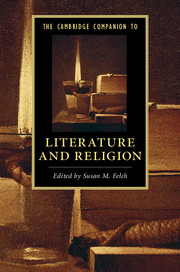7 - Sacrifice
from PART II - INTERSECTIONS
Published online by Cambridge University Press: 05 September 2016
Summary
Sacrifice is a fraught category for many twenty-first-century readers, and any effort to promote or preserve it surely calls for careful negotiation. In its religious and liturgical expressions, sacrifice is marked out for critique as a symptom of the pathological suffering, violence, and abuse that should either be expunged from religion or be the sufficient reason for abandoning religion as an artifact of a benighted past. Christianity, in particular, with its central figure of a crucified Christ and with a central ritual identified by some denominations to be sacrifice, bears the brunt of such attacks.
Feminist critiques of Christian sacrifice are distinctively sharp, claiming that sacrifice and atonement theory together perpetuate patriarchy and are conducive to a dangerous construct of fear-respect-love that encourages abuse in families and societies. Pamela Sue Anderson pointedly argues that the very notion of sacrificial suffering connotes a pernicious, “self-destructive love.” In her view, women especially must shun the Marian model in which they, repressively socialized into a passive love of a male God, are encouraged to say, “fiat mihi,” “Let it be done to me.” In place of a love that encourages sacrificial suffering, Anderson proffers a liberated, Enlightenment-rational proposition of autonomous, nonsacrificial love. Put bluntly, a free, equal, and rational humanity has no need of sacrifice. At least in the court of the Western world, the jury has largely decided that religion is more enlightened and more compassionate without it. But is this the case? And what is lost to Christianity in particular if the attempt to excise sacrifice – with all its unsettling and negative polyphony – is indeed successful?
For a clear riposte to such critiques of sacrifice, and for insight into the productive and transformative potential of sacrifice, we can turn to the vision and writing of Flannery O'Connor. O'Connor's recently published A Prayer Journal (2013; hereafter abbreviated as PJ), in which she explores her vocation as a writer, provides a remarkable framework for revisiting Christian sacrifice. The journal is written between the years 1946 and 1947, when O'Connor is in her early twenties.
- Type
- Chapter
- Information
- The Cambridge Companion to Literature and Religion , pp. 116 - 131Publisher: Cambridge University PressPrint publication year: 2016

